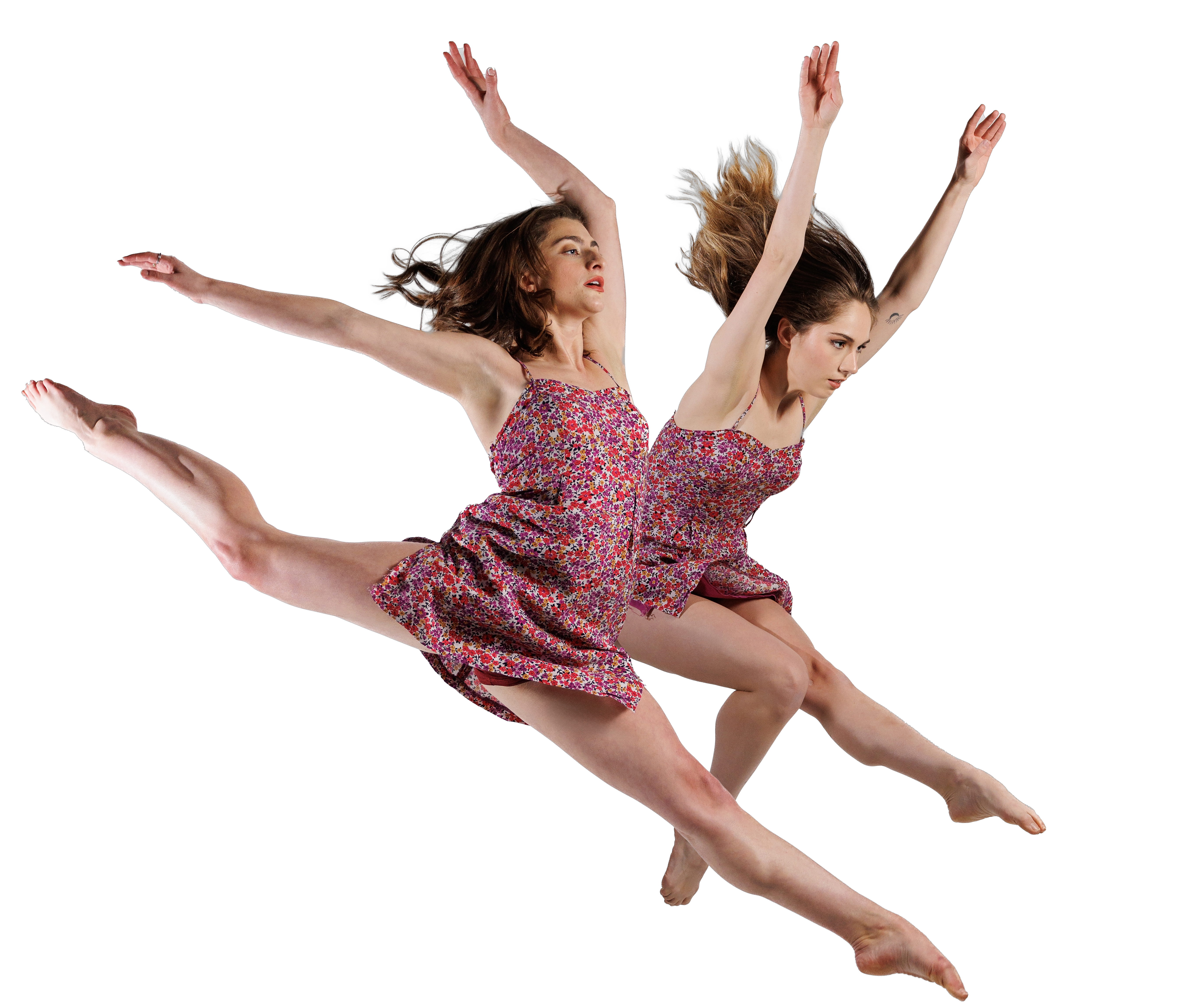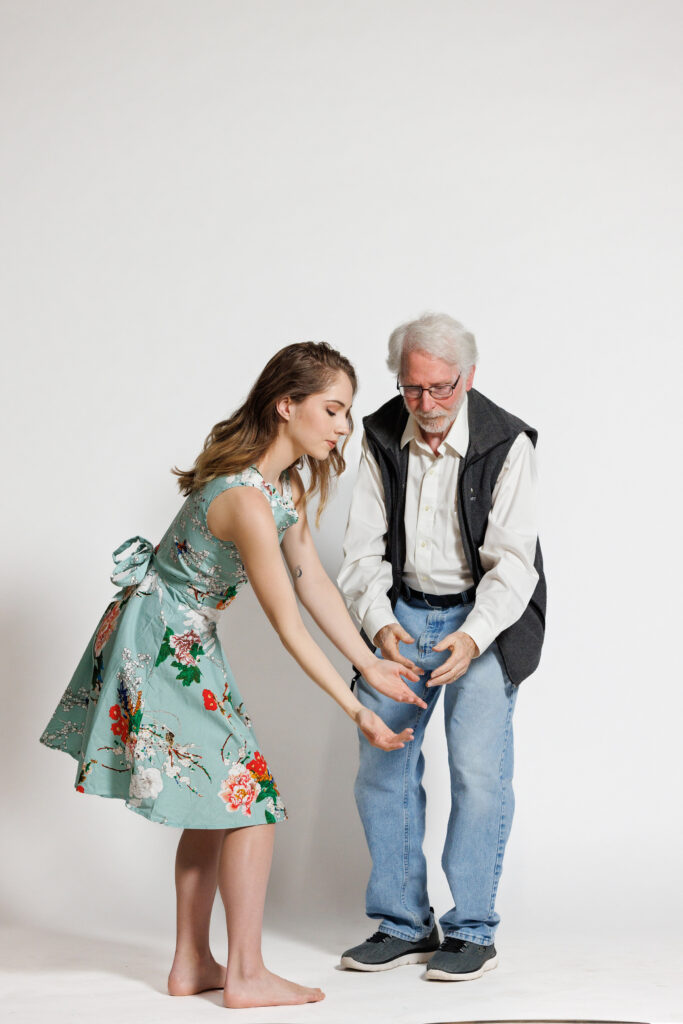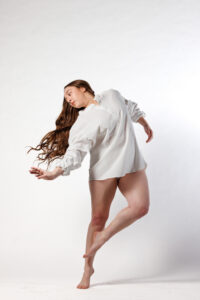The dance class starts with deep breathing. Later, students will be encouraged to release a big yell. Seated in folding chairs, the attendees at the Dance for Parkinson’s – Baton Rouge sessions stretch their arms into the air. They tap their feet. They make faces and punch the air.
“They do all the kinds of things that are difficult for people with Parkinson’s,” Susan Perlis says.
Perlis is the director of Dance for Parkinson’s – Baton Rouge, an Of Moving Colors (OMC) program that hosts courses for patients and their caretakers. And by the last 30 minutes of the class, Perlis will have everyone out of their seats. Her students will tango or bounce to the “Cha-Cha Slide.” They’ll sway to a playlist of Cat Stevens, Louis Armstrong and The Supremes. They’ll mirror moves, but they’ll also improvise their own.
|
|
|

And some will practice for their onstage debut next month. On May 17, OMC presents Orchid’s Arc, a choreographed show about the beauty of movement through the stages of life. The event will feature OMC dancers and appearances from Dance for Parkinson’s students. It aims to spread awareness about the disease and Perlis’ classes.
Perlis has been instructing dance for more than 50 years, making an impact on the lives and careers of dancers everywhere from Baton Rouge Ballet Theatre to LSU to Southern University. But for all her decades of teaching, these classes are particularly close to her heart.
Her husband, Robert, is one of the students.
Perlis remembers the signs. Robert was having vivid dreams. His handwriting was suddenly becoming teeny-tiny.
Trouble sleeping, tremors and shrinking handwriting are some early signals of Parkinson’s, a disease afflicting more than 10,000 Louisianans and 1 million people nationwide, according to the Parkinson’s Foundation.
After Robert was diagnosed in 2012, Perlis enrolled in the Mark Morris Dance Group’s Dance for PD program, traveling to New York for training in specialized dance classes. Back home in Baton Rouge, she connected with OMC Artistic Director Garland Goodwin Wilson, and Dance for Parkinson’s – Baton Rouge was established in 2016.
Today, the classes are held every week. Another weekly session for The East Baton Rouge Council on Aging isn’t restricted to patients with Parkinson’s, but it may inadvertently reach someone impacted by the disease.
“There’s so much lack of diagnosis that you might not even know you have Parkinson’s. So it’s a way that we can also educate people about what Parkinson’s is,” Wilson says.
All classes are free for patients and their caretakers. The program has received support from the Parkinson’s Foundation, including several grants over the years, but the sessions are largely volunteer-driven.

“For people with Parkinson’s, just plain old moving is essential. … It is a progressive disease, and the number one way that people can forestall it is to keep exercising.”
[—Dance for Parkinson’s - Baton Rouge Director Susan Perlis, pictured here with her husband, Robert]
Parkinson’s patients battle muscle stiffness and impaired movement and balance. But they often find dancing is easier than everyday movements, according to the Dance for PD program.
Some participants are hesitant in the beginning. “I don’t dance; I can’t dance,” they’ll tell Perlis. She and OMC’s dancers help them work through that mindset, and in turn, some of their physical challenges.
“People with Parkinson’s can get stuck—they might be at the grocery store, and they’ll just stop,” Wilson says. “But you want to visualize the lines that you’re going to step over, and just walk. … Visualization is a really important part of what we do in the classes.”
Soon, they’re playing “Heads, Shoulders, Knees and Toes” or an adapted version of hopscotch. They’re getting cardio. They’re socializing. One moment, they’re being silly. The next, they’re having more serious discussion.
“For people with Parkinson’s, just plain old moving is essential. The more they can move, the better it is,” Perlis says. “It is a progressive disease, and the number one way that people can forestall it is to keep exercising.”
There are ups and downs. One week, an attendee might arrive to a session defeated by a bad week. The next, they’re upbeat.
“But the people that take classes constantly tell us, ‘I have to be here,’” Wilson says. “When they go home, I think they’re happier. It’s a direct function of having danced.”
Hannah Knoff recalls first stepping into a Dance for Parkinson’s class about a year and a half ago.
“I was just shocked at the creativity and the storytelling,” says Knoff, OMC’s associate director. “My dance partner, Frank, was over here creating this soulful improv piece—it was just beautiful movement. I was like, ‘Wait. These people are dancers. This is real.’”
That moment was Knoff’s inspiration for this month’s Orchid’s Arc.
Her vision: showcasing young people and mature people moving together—and the importance of the community and support fostered between the two groups.
“We’re all movers. Regardless of professional or academic dance training, all humans have an internal rhythm and internal storytelling,” she says.

“We’re all movers. Regardless of professional or academic dance training.”
[—Of Moving Colors Associate Director Hannah Knoff, pictured here with Parkinson’s patient Robert Perlis]
Orchids have many symbolic meanings—from growth and vitality to healing and strength.
This show falls under the umbrella of OMC’s “Petal Project”-themed spring season, with each show as a “petal” that represents a different stage in the arc of life.
The dance company’s productions have supported organizations like Big Buddy and The Emerge Center in shows that have taken them to a range of venues across the city, from Manship Theatre and MidCity Ballroom to Ann Connelly Fine Art and Eye Wander Photo.
Whether they’re working to support the young or the old, each project searches for physical freedom through dance.
“As dancers, sometimes we forget we don’t need to be so perfect all the time. We forget to just appreciate,” Knoff says. “I’m lucky I get to be here moving my body, surrounded by good people.”
For Knoff, the Dance for Parkinson’s classes have reminded her of the simple joys of moving—without the pressure of nailing that triple-turn.

SEE THE SHOW
Orchid’s Arc
May 17, 7 p.m.
Manship Theatre
|
|
|
Tickets and info at ofmovingcolors.org
This article was originally published in the April 2024 issue of 225 magazine.





